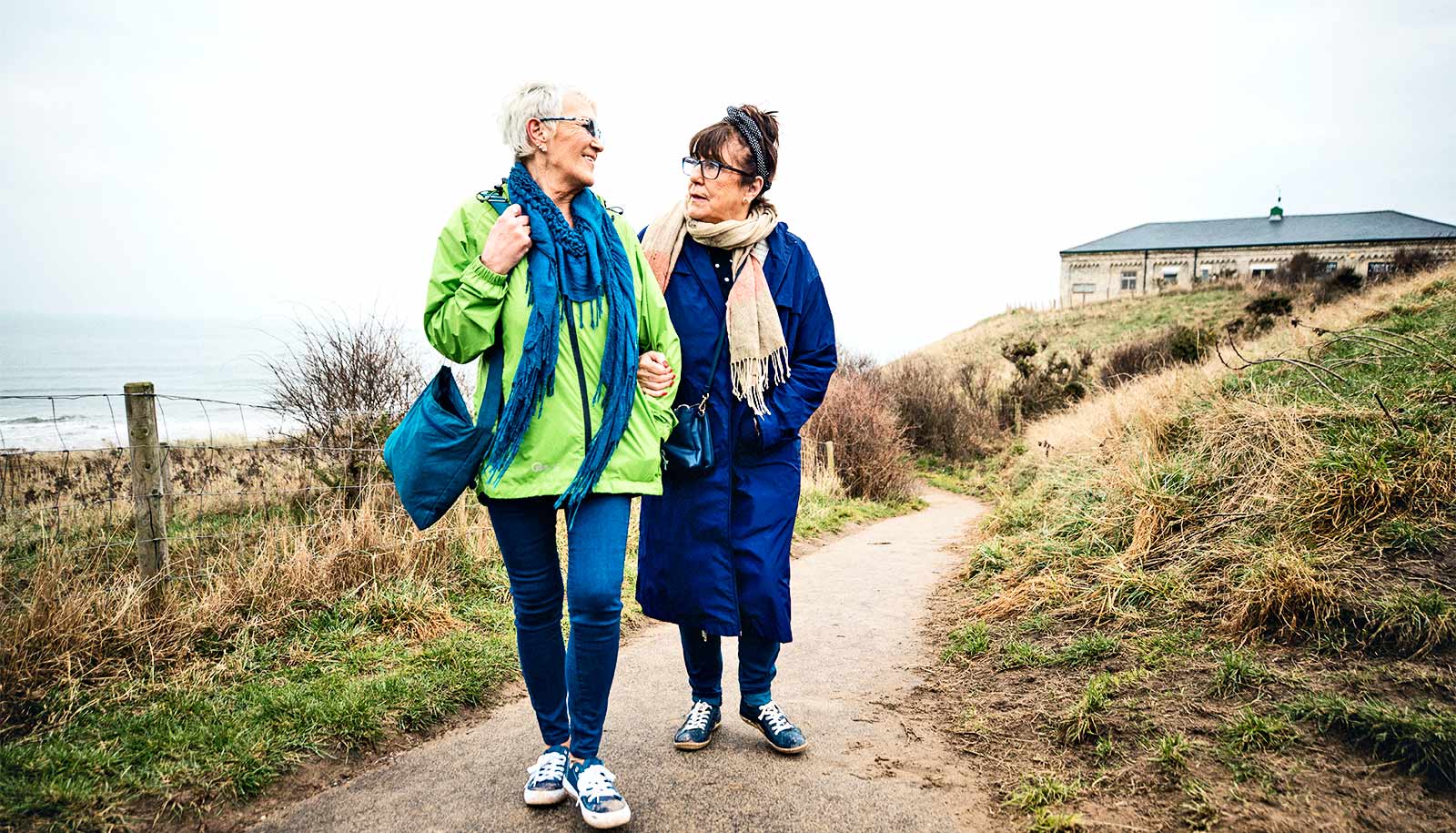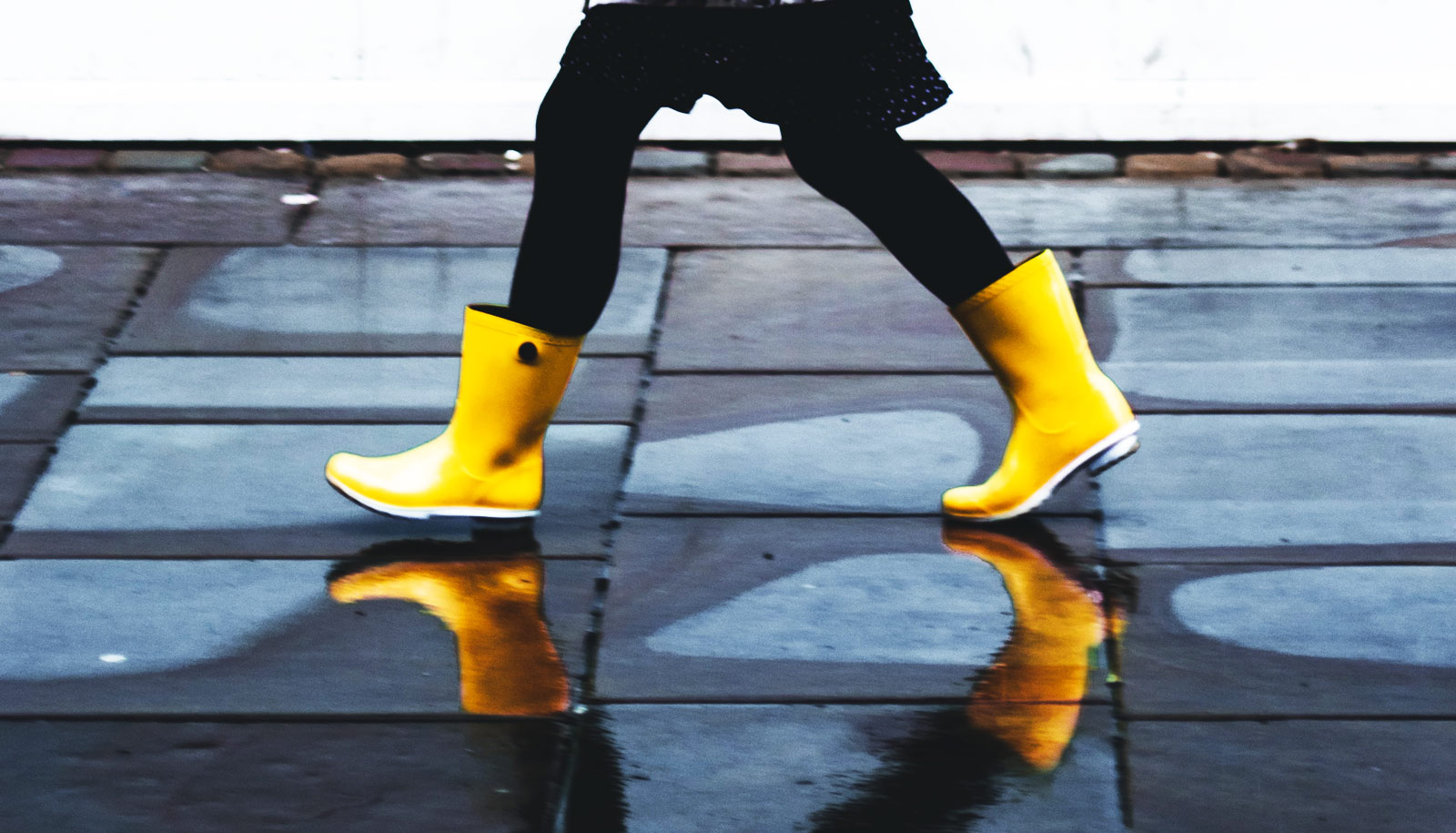Couples often decrease their speed when walking together, researchers report.
Couples decrease their speed even further when they hold hands, according to the new study.
Researchers looked at walking times and gait speeds of 141 people from 72 couples. Participants ranged from age 25 to 79 who walked together, walked together holding hands, and walked individually. Settings included both clear and obstacle-filled pathways.
“In our study, we focused on couples because partners in committed relationships often provide essential support to promote one another’s healthy lifestyle behaviors, including exercise,” says Melissa Franks, associate professor of human development and family studies at Purdue University.
“We were hoping that there would not be a reduction in speed where partners walked together,” says Libby Richards, associate professor of nursing. “We hoped that slower partners would speed up to match the faster partner, but that was not the case. However, it’s important to note that any physical activity or walking—regardless of speed—is better than none.”
Richards says it’s common for people to walk or exercise with a spouse, partner, or friend and doing so increases the likelihood someone will be active. Americans are encouraged to meet a goal of 150 minutes of moderate activity every week.
“If someone substantially slows down when they are walking with someone else, that could negate some of the health benefits recognized if they walked alone at a faster pace,” Richards says.
There are many reasons to measure gait speed, says Shirley Rietdyk, professor of health and kinesiology who specializes in biomechanics.
“Gait speed is important to measure because it is related to overall health,” Rietdyk says. “Typical gait speed is predictive of fall risk, functional ability, disability recovery, and mortality.
“Common exercise interventions, including strength, coordination, and multimodal training, are all effective in increasing gait speed,” she says. “These interventions can also delay the onset of slower gait speed and help slow the loss of gait speed. No one type of training is better than the other, so do the activity you are most likely to stick with.”
While walking is one of the easiest activities, people tend to walk slower as they get older and may have to find other fitness routines to stay active.
“Older adults who are more active tend to maintain their gait speed,” Rietdyk says. “In other words, slower gait speed is not an inevitable aspect of aging. Older adults who walk slower tend to have poorer health and lower functional status.”
The study appears in the journal Gait & Posture.
The Purdue Center for Families and the American Nurses Foundation funded the work.
Source: Purdue University


